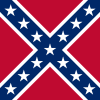| Online: | |
| Visits: | |
| Stories: |

| Story Views | |
| Now: | |
| Last Hour: | |
| Last 24 Hours: | |
| Total: | |
Wigfall vs. De Bow: Two Views of Southern Economic Independence
By Hunter Wallace
The following excerpt comes from Michael Lind’s Land of Promise: An Economic History of the United States:
“In 1861, former US senator from Texas Louis T. Wigfall told a British correspondent: “We are a peculiar people, sir! We are an agricultural people; we are a primitive but a civilized people. We have no cities – we don’t want them. We have no literature – we don’t need any yet … We want no manufactures; we desire no trading, no mechanical or manufacturing classes … As long as we have our rice, our sugar, our tobacco, and our cotton, we can command wealth to purchase all we want from those nations with which we are in amity, and to lay up money besides.”
The journalist James B. D. De Bow, writing before the Civil War, did not share Wigfall’s complacency: “Our slaves work with Northern hoes, ploughs, and other implements. The slaveholder dresses in Northern goods, rides on a Northern saddle … reads Northern books … In Northern vessels his products are carried to market … and on Northern-made paper, with a Northern pen, with Northern ink, he resolves and re-resolves in regard to his rights.”
Here’s another relevant excerpt from Kvach’s book on De Bow:
“A Review contributor questioned why more Southern shipbuilders had failed to materialize, despite the South’s abundance of lumber, naval stores, and cotton to transport. A disenchanted reader noted that the delegates to the 1858 Vicksburg Commerical Convention had traveled on northern-built railroad cars and rode on iron rails produced in northern factories. Once they arrived at the convention, delegates used chairs and desks that had been assembled by northern workers and after a long day retired to “lie down to dream of southern independence in a Yankee bed.”
Lind notes:
1.) The North had 22,000 miles of railroad to 9,000 miles in the South plus the indudstrial capacity to make necessary repairs.
2.) The North had 19 million people compared to 9 million in the South. 3 million of those were slaves.
3.) The North had 10x the industry and the manufactured products of the Confederacy added up to less than one-fourth of New York’s manufacturing.
4.) The North had 14 of the 15 largest American cities.
Source: http://www.occidentaldissent.com/2015/12/05/wigfall-vs-de-bow-two-views-of-southern-economic-independence/



